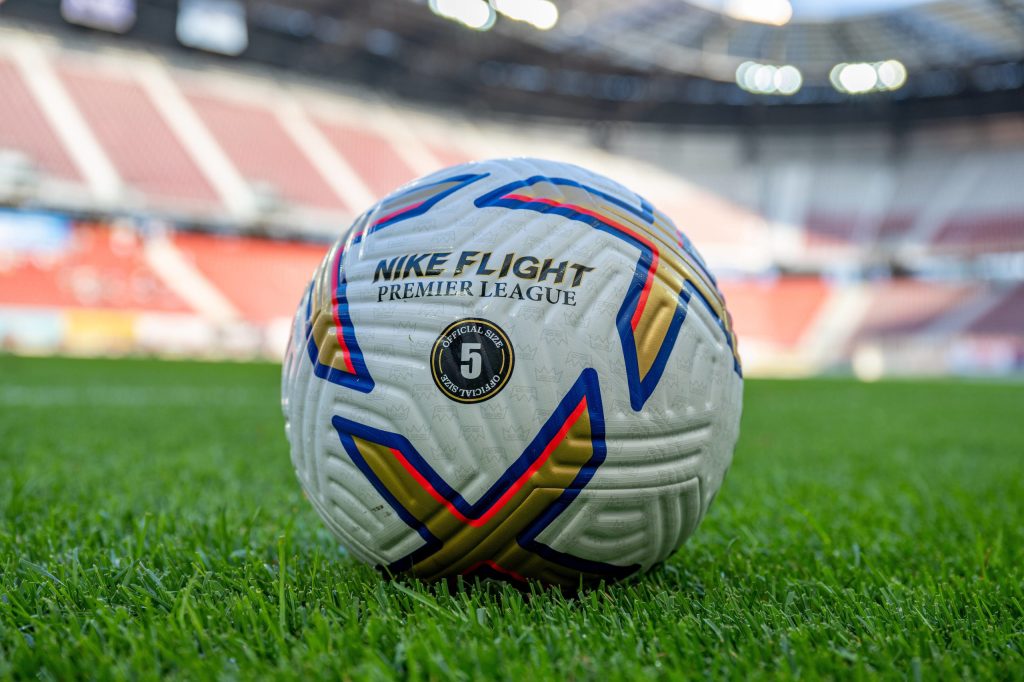In this data analysis, I will be using data to produce the team of the season so far for the 2020 Eliteserien campaign. The statistics and data used in this analysis have been obtained from Wyscout and the formation used will be a 4-3-3, similar to that of Liverpool and, more importantly, Eliteserien champions-elect Bodø/Glimt.
To make the team a little more interesting and diverse, I will be excluding players from the aforementioned league-leaders, and all players must also have played more than 1000 minutes in order to be considered. Players who are no longer competing in the Eliteserien have also been excluded.
This data analysis will be done in three parts, with this final part looking at the attacking trio (two wide players and one centre-forward).
Wide players
For the two wide attackers, I will be choosing players who are both goalscoring and creative threats, as well as being comfortable at both passing (crossing) and running with the ball. As such, the data metrics that will be explored in this part of the analysis are non-penalty goals and assists, expected assists, crossing volume and accuracy, dribbling volume and accuracy, key passes and offensive duel success. On top of the general selection criteria, players must have played the majority of their minutes as wingers or wide-attacking midfielders.
I am also aiming to select one player who plays mainly on the right and one who plays predominantly on the left; however, this isn’t completely strict so as to exclude a clear second-best should they play on the same side as the other selected player. I’ll start this analysis by looking at pure attacking output data.
The above stacked column chart shows players ranked in ascending order for their combined non-penalty goals and assists per 90 minutes. The five highest-ranking players here are as follows:
Amahl Pellegrino – The Kristiansund player and 2020 Eliteserien top goalscorer leads the way with his 0.78 non-penalty goals per 90 minutes and 0.09 assists – a combined total of 0.87.
Zymer Bytyqi – The Viking man averages 0.46 non-penalty goals per 90 minutes and 0.25 assists, giving him a total of 0.71.
Bendik Bye – Pellegrino’s teammate averages 0.5 non-penalty goals per 90 minutes and 0.17 assists, giving him a total of 0.67. Most of his game time has been as a substitute, however.
Carlo Holse – The Rosenborg player averages 0.36 non-penalty goals per 90 minutes and 0.28 assists, giving him a total of 0.64.
Bård Finne – The Vålerenga man averages 0.5 non-penalty goals per 90 minutes and 0.08 assists, giving him a total of 0.58.
So as not to mark down creative players who are let down by the finishing of their teammates, I have also chosen to explore expected assists numbers, and the above column chart, displayed in ascending order, shows this data. The top performers here are as follows:
Pål André Helland – The Rosenborg player is statistically the most creative player with an xA per 90 minutes of 0.37. He also scored sixth-highest on the previous chart.
Zymer Bytyqi – Second on the previous graph, his position is strengthened by an xA per 90 minutes value of 0.3.
Aron Dønnum – The Vålerenga player has an xA per 90 minutes value of 0.23, though this is lower than his actual assist number (0.28 per 90 minutes).
Bendik Bye – Third in the previous graph, his actual assist number is strengthened by his xA per 90 minutes value of 0.2.
Kristoffer Tokstad – The Strømsgodset player has an xA per 90 minutes value of 0.2, almost identical to his actual number of 0.21.
Having explored the above data, I have decided to exclude the six players who scored lowest for non-penalty goals and xA combined from further consideration. I will now take a look at how the players produce their threat.
The above scatter graph plots crossing volume against the accuracy of these crosses with a position in the top-right quadrant showing a player attempting a large number of crosses at greater accuracy. The notable performers here are as follows:
Tokstad – The winger crosses the ball 4.88 times on average per 90 minutes with an accuracy of 43.16%.
Holse – The left-footed player has an accuracy of 42.86% from his average 3.98 crosses per 90 minutes.
Bytyqi – The attacker provides a large number of crosses, averaging 6.3 per 90 minutes with an accuracy of 33.06%.
The three players furthest towards the bottom-left corner have been excluded going forward.
The above scatter graph plots dribbling volume against the success rate of these dribbles with the top-right quadrant again showing the top performers. The players who really stand out here are:
Dønnum – The winger attempts a very impressive 11.8 dribbles per 90 minutes with a success rate of 57.81%.
Bytyqi – The Kosovan is second for dribbles attempted per 90 minutes with 9.55, whilst his success rate of 70.21% is far superior to his peers.
I have chosen to exclude three more players following a look at the dribbling data.
The above column chart shows the key passes played by each of the players who remain in consideration and is displayed in ascending order. Familiar names again come to the fore in Bytyqi, Dønnum and Tokstad who average 1.17, 1.06 and 0.92 key passes per 90 minutes respectively.
Given the data shown so far, I believe it’s easy to narrow down the selection to four players, and the final graph will look at these players alone.
The above scatter graph plots the number of offensive duels the players are involved in on average per 90 minutes against the success rate of these duels. Again, Bytyqi and Dønnum are the standouts. The former wins 60.89% of his average 12.6 offensive duels per 90 minutes, and the latter wins 49.88% of his average 19.59 offensive duels per 90 minutes.
In my opinion, the clear best overall wide attacker in the 2020 Eliteserien is Zymer Bytyqi. He is both a running and passing/crossing threat and scores and creates goals regularly. He is a must for the team of the year.
The decision as to who gets the other spot is incredibly tricky, however. Aron Dønnum offers an incredible threat on the ball and is left-footed and plays predominantly on the right, the opposite of Bytyqi. The other option, Amahl Pellegrino, plays on the same side to Bytyqi and doesn’t offer the running or creative threat of Dønnum but provides a much bigger goal threat.
It would be incredibly difficult to leave out the 2020 Eliteserien top goalscorer so Pellegrino wins his place on the left of the attacking three with Bytyqi playing on the right.
Centre-forward
The modern-day centre-forward is judged on much more than simply the total number of goals scored in a season. In the specified tactics of this data analysis, it is important our centre-forward is an efficient goal-scorer as well as being a focal point for his team and perhaps also a creative influence.
With that in mind, the metrics I have chosen to explore for this position are non-penalty goals per 90 minutes, performance compared to xG, shot conversion, assists (including second and third assists) per 90 minutes, offensive duel success and aerial duel success. As well as the general rules of this analysis, players must have played the majority of their minutes as a central attacker either as part of a duo or alone. I’ll begin by looking at what is still largely considered most important for strikers, goals.
The above column chart shows the number of non-penalty goals each player averages per 90 minutes and is arranged in ascending order. The two players who sit well above the rest are:
Leke James – The Molde player averages 0.62 non-penalty goals per 90 minutes.
Mushaga Bakenga – The Odds striker averages 0.61 non-penalty goals per 90 minutes.
The above column graph shows the number of non-penalty goals each player has scored per 90 minutes compared to their non-penalty xG. The players with a positive value (blue columns) are overperforming their xG whereas those with a negative value (red columns) are underperforming. It is my opinion that over the course of a full season a player overperforming their xG can be considered a good finisher.
The graph is displayed in the order of non-penalty goals scored per 90 minutes, and interestingly the top eight goal-scorers (average per 90) are all overperforming. The players with the highest efficiency are as follows:
Sivert Gussiås – The Sandefjord striker has scored almost double his xG, his 0.31 non-penalty goals coming from a non-penalty xG of just 0.16.
Leke James – The Nigerian’s goals have come from a non-penalty xG of 0.48, an overperformance of 0.14 per 90 minutes.
Ibrahima Wadji – The Haugesund man has overperformed his xG by 0.11 per 90 minutes, scoring 0.31 non-penalty goals from a non-penalty xG of 0.20.
Given the above two graphs, I have deemed those who underperformed their xG unworthy of further consideration.
The above column chart, which shows the % of shots which result in goals, adds weight to the view of finishing ability. Again, the best two players here are James and Gussiås. The former converts 31.25% of his shots whereas the latter is successful with 26.92% of his.
It’s safe to say they are the best finishers in the league with the difference in the volume of their goals most likely down to the overall quality of the teams they play for.
As well as scoring goals, our centre-forward is required to contribute to overall attacking play. The above stacked column chart shows assists, second assists and third assists for the players and is displayed in ascending order. The top three here are as follows:
Veton Berisha – The Viking man leads the way with a combined 0.33 per 90 minutes, 0.23 coming from first assists.
Shuaibu Ibrahim – The Mjøndalen player has a combined 0.27 per 90 minutes with 0.07 coming from first assists and 0.13 from second assists.
Leke James – The Molde striker’s 0.23 second assists per 90 minutes have him third in this category.
As well as providing goals and assists, it is crucial the centre-forward works hard for the team and wins his fair share of ground and aerial duels. The above scatter graphs plot the number of duels each player is involved in on average per 90 minutes against the success rate of these duels. The three worthy of discussion here are as follows:
Dino Islamović – The Rosenborg man, who has a similar playing style to EPL-player Aleksandar Mitrović, stands out in the aerial duels, winning 50.51% of his average 10.97 per 90 minutes. He is also one of the better performers in overall offensive duels, winning 36.31% of his average 8.7 per 90 minutes.
Veton Berisha – The Kosovan leads the way for offensive duels success with 50%, though is involved in only 4.69 per 90 minutes. He also boasts the second-best success rate in aerial duels, winning 37.98% of his average 6.04 per 90 minutes.
Leke James – The Nigerian leads the way for offensive duels contested with 10.54, though he is successful in only 26.67% of these. His aerial duel numbers are better as he wins 36.36% of his average 7.73 per 90 minutes.
These three are probably the ones worthy of final consideration. Islamović is the most combative of the 2020 Eliteserien centre-forwards and provides a reasonable amount of goals, he lacks in creativity, however. Berisha is probably the most well-rounded of the three in that he competes well, and scores and creates regularly. James is clearly the best finisher in the league and doesn’t shirk a battle, he also contributes as a creative force.
Goal-scoring is probably still the most important commodity in a centre-forward and James leads the way in this score with his efficiency also the best. He contributes effectively in other areas and is, therefore, a fairly easy selection at centre-forward in this 2020 Eliteserien team of the year.
Conclusion
Using a variety of data metrics, I have produced a front three for the 2020 Eliteserien team of the year capable of providing a large volume of attacking returns. Leke James, who also scored twice in the UEFA Champions League qualifiers, is selected as the centre-forward, with Zymer Bytyqi on the right and Amahl Pellegrino on the left. They join the eight players selected in the previous parts of this data analysis; the overall team is pictured below.



















